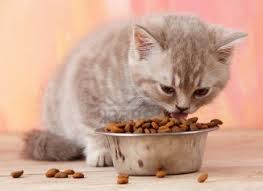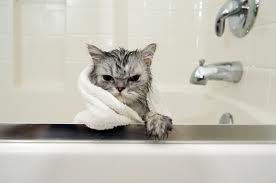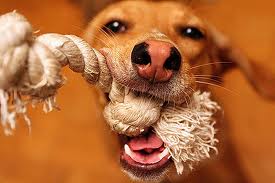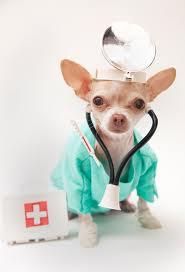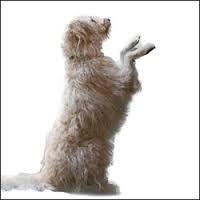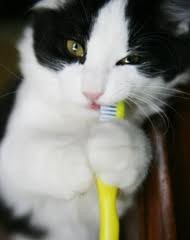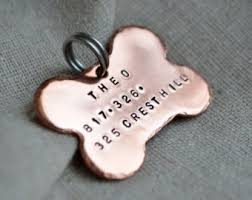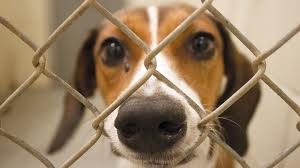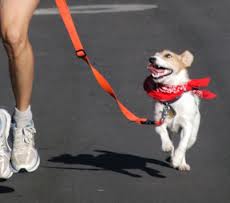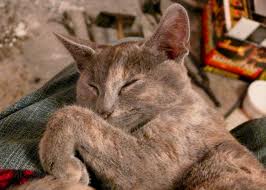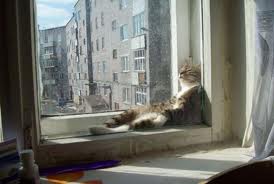Posts Tagged ‘cat health’
Top 10 New Year’s Resolutions for Your Pet (And YOU!)
(1) Measure your pet’s food every time, don’t just guess.
(2) Choose an age appropriate diet taking into account their activity level.
(3) Try a new activity with your pet, whether its taking a class with your dog (Val and I do agility at Kellar’s Canine Academy, and he LOVES it!), or buying a new cat toy that your cats love (Leo & Mya loves the cat nip cigars from Yeowww Catnip).
(4) Groom your pet daily! It doesn’t have to be a long session, anything counts!
(5) Add more playtime into your pet routine.
6) Schedule a check up with your vet.
Make it Your Mission, To Get Your Pet In Top Shape This Year!
A recent survey indicates over 50 percent of America’s pet population is overweight or obese. It’s an epidemic now!
To get your pet healthy, or keep your pet healthy and at an optimal weight, food/nutrition & exercise are KEY!
FIRST STEP: DIET & THE RIGHT FOOD!
Very simply put, if your pet is overweight it is taking in (eating) more calories than it needs. Set all excuses aside … excessive weight in an otherwise healthy pet is a direct result of consuming unnecessary amounts of food. Of course, before starting down this course, consult your vet to make sure your pet doesn’t have any metabolic disorders.
When it comes to diet, feed your pet a high quality food, so he gets the nutrients he needs to keep healthy and full! It’s that easy. Don’t feed your pet the equivalent of McDonalds every day (Purina, Beneful, Alpo, Kibbles & Bits, etc) because its cheaper, and easier to purchase (at the grocery store). Spend a little more money and time, and later on down the road, your pet should have fewer medical issues, which means your wallet will suffer less too!
Let’s examine some excuses when it comes to your dog’s feeding habits. Whether your dog is a good weight or overweight, these 4 points are good to note!
DO ANY OF THESE SOUND LIKE YOU?? (cats are more of an issue, and overweight issues with cats need to be discussed with a vet)
(1) “But she hardly eats a thing.” This is probably a case where you feed your dog table food, so she is getting calories from that, and choosing not to eat her own food. Stop the people food- it’s unwanted calories!
(2) “My pup won’t keep quiet unless she gets her treats. And she won’t go to sleep at night until she gets her little dish of ice cream.” Congrats, your pet has trained you! Your pet has discovered that the more noise and fussing it produces the more likely it is to be rewarded for this behavior. The owner finally “gives in” to keep the pet quiet and the pet sees the food as a reward. In effect the owner is creating a “beggar” by rewarding his/her behavior. You need to break this habit immediately, and re-train, reward for being good and quiet.
(3) “She’s such a good dog we don’t want her to go hungry.” This dog became overweight because the owner’s signal of affection for their pet has focused on feeding. It is an understandable trait but unfortunately for the dog it can be a case of too much of a good thing. The owners’ method of showing affection should be directed more toward physical activity than feeding. Think “FETCH” and “TUG” not “FOOD”!
(4) “She just refuses to eat dog food.” In this case the dog has trained the owners to feed him/her such things as chicken, liver, ice cream, cookies, etc. This dog has been given a choice of what to eat and has chosen certain people food. The dog usually overeats because s/he isn’t getting a proper balance of nutrition, plus everything tastes so good there is a reward factor in eating. The solution is … you choose, not your pet. Leave down the dog food, and don’t worry if she doesn’t eat it right away, she won’t starve herself. A dog can go without food for 5 days before you have to worry (as long as she is in relatively good health and not diabetic).
SECOND STEP: THE RIGHT AMOUNT OF EXERCISE
Exercise is beneficial for your pets in so many ways- it helps decrease stress, improve sleeping habits, maintain or loose weight, and you know the old saying- A TIRED DOG IS A GOOD DOG!
The type and amount of exercise needed can differ greatly with breed, age and energy level of your pet. However, it is important to choose the right type of exercise for your pet with the help of a veterinarian if your pet is overweight. With their assistance you should be able to bring your pet back to their optimal weight. Arthritis, diabetes, cardiovascular problems are just some of the issues your pet will deal with if he or she is overweight. According to the Association for Pet Obesity Prevention, it may even decrease their life expectancy by up to 2.5 years. So if it is so bad as to affect our pet’s health, how are we letting it happen?
Exercise is important for all pets, overweight or not!
Whiskers and Leo does offer dog walking and dog running if you need extra help exercising your dog! As for cats, cats need daily exercise too, but more in the form of play. We do offer cat visits if your feline needs some extra attention and play!
Winter Tips for Your Kitty
With the cold temperatures, we need to make sure your kitties stay warm and safe!
1) If your cat is outdoor/indoor, make sure he or she is acclimated and doesn’t stay out too long, especially when it’s below freezing.
2) Watch for signs of frostbite- ears, tails, footpads and look for pale, glossy or white skin.
3) Cats like to curl up in warm places. Prevent potential burns and fires by protecting your cat from open fireplaces, wood stoves and space heaters. Warm engines are also a favorite place for outdoor cats, and feral cats too, so honk the horn or bang on the hood before starting the car.
4) Antifreeze has a sweet taste cats like but it’s toxic enough to cause serious illness and even death. Make sure your car isn’t leaking any fluids and keep containers safely locked away.
5) Feed your kitty a nutritionally complete food and always have water out for him or her. Nutrition and water are important because a well-nourished pet is better equipped to cope with harsh weather.
6) Give your cat a cozy place to sleep by offering some bedding in a warm place, free from drafts. You can raise your bed off the floor, too, cats love that jungle lair feeling.
7) Contact your vet immediately if you notice changes in your cat’s behavior, such as energy-level or appetite-decrease.
16 Top Household Hazards for Cats
I know as a cat owner you think you have thought of it all, but it’s better to be safe than sorry!
(1) Human medications. Never leave pills on the counter because I have seen/heard of cats eating them, despite the fact that they are NOT tasty!
(2) Insecticides. One of the most common incidents, involved the misuse of flea and tick medication such as applying the wrong ones to the wrong animals.
(3) People Food. Keep your cats away from grapes, raisins, chocolate, xylitol, avocado, gum…
(4) Plants. Click here to get a complete list.
(5) Pet Medications. Make sure they are properly dispensed.
(6) Rodenticides. Don’t use them in your homes – cats can get into most tight places.
(7) Household Cleaners.
(8) Heavy Metal Paint Chips.
(9) Garden Products. Watch out for cocoa mulch and fertilizer.
(10) Chemical Hazards. Watch out for anti-freeze, pool chemicals, paint thinners & drain cleaners.
(11) Thread, Dental Floss, Tinsel. Cats love string so watch out!
(12) Mini Blinds. Cats/kittens can easily hand themselves if they get caught in the cords!
(13) Treated Toilet Water. I have stopped using the toilet bowl tabs that clean your toilet automatically because even cats sometimes drink out of toilet bowls; they are very agile!
(14) Rubber Bands.
(15) Plastic Bags.
(16) Windows/Screens. An open window can pose a threat to a cat, even if it has a screen on it. I would’t open your windows too far. Screens can break!
ALL ABOUT KEEPING YOUR PET SAFE IN THE SUMMER HEAT!
Hyperthermia is systemic over-heating. Excessive heat is hard on the cells and organs of pets. Panting is a pet’s way to cool themselves; however, the higher the temperature, the less efficient panting becomes for pets (especially for the brachycephalic breeds (short-nosed)).
We have had record heat in our area, so please take all precautions to prevent any heat injuries to your pets!
PREVENTION TIPS
(1) Never leave your pets in the car.
(2) Pay special attention to older and younger pets because they are more susceptible to heat stroke.
(3) If left alone at home, make sure the home is cool. Do not leave your pets in the yard unattended.
(4) Pets need a constant supply of fresh clean cool water.
(5) Exposing your pets to stresses like traveling, strange sights, sounds and smells, and excitement can be a factor in causing your pet to overheat.
(6) To cool off your pet, wet their paws with cool water, or just hose their whole bodies down with cool water.
(7) Shorten your dog’s walks, walk in shaded area, or walk at the cooler times of the day.
SIGNS OF HEAT STROKE
(1) Uncontrollable panting.
(2) Rapid heart rate.
(3) Body Temperatures of 105 degrees and above are extremely dangerous. Normal temperature for cats and dogs is 101.5 to 102.4 degrees.
(4) Mucous Membranes. As the pet’s condition gets worse, the tongue, gums and lips will progressively move to blue/gray and the pet’s mouth will be dry.
(5) Foaming/Salivating.
(6) Lethargy.
(7) Capillary refill- when capillary refill time reaches 5 seconds, this is a sign of heat stroke.
(8) Vomiting.
ACTIONS TO TAKE
(1) Note the time you begin assisting your pet.
(2) Restrain and muzzle if necessary; however, if you muzzle then the pet cannot pant and you are now responsible for cooling the pet’s body down.
(3) Bathe or hose the pet’s body with copious amounts of cool water. Do not use ice or very cold water.
(4) Monitor the body temperature, and stop when it reaches 102 degrees.
(5) Monitor mucous membrane color; unless your pet normally has black gums, pink is the usual.
(6) Prepare to treat for shock, which is the lack of adequate oxygen to the cells of the body.
(7) Do not give them anything to eat or drink unless advised by a veterinarian to do so.
(8) Contact your vet or nearest animal hospital for further assistance.
The information and tips above are provided by PetTech. They offer Pet CPR and First Aid.
TOP 5 TOXINS TO YOUR PET IN 2010
I saw an article about the Top 5 Toxins to Your Pet in 2010, and I thought it was important to share!
Some people tend to think that cats are not as fast to eat things they shouldn’t, but that is entirely untrue. About 9% of the calls to the Animal Poison Control helpline are about cats! So whether you have a dog, cat or another pet, this is a must read!
Remember, this is not an exhaustive list. Just a list of the top 5 reasons people called Animal Poison Control in 2010.
1. Human and Veterinary Medications – During 2010, about 40 percent of feline cases at Pet Poison Helpline involved cats that improperly ingested human or veterinary drugs. Cats have difficulty metabolizing certain drugs, especially as compared to dogs and humans. Common drugs such as NSAIDS are some of the most deadly to cats. When ingested, NSAIDS can result in severe kidney failure and stomach ulcers. Likewise, one acetaminophen tablet can be fatal to a cat, as it results in damage to red blood cells. Untreated, it can cause severe anemia, difficulty breathing, a swollen face, liver failure and death. Cats also seem to like the taste of certain antidepressants, which seem to contain an attractive smell or flavor in the coating. With any accidental medication ingestion, immediate veterinary care is imperative.
True Story: Last weekend, a friend of mine’s mother, left her daily pills in a plastic cup on the counter in the bathroom. She left the room and when she returned, the pills were spilled over on the floor. She noticed 2 pills missing, one being a blood pressure pill. Immediately she told my friend, and they calmly surveyed the situation. First, they thoroughly searched on the floor for the pills; however, they were nowhere to be found. My friend has never seen her cat eat a pill, and never thought he would! She then took one of the blood pressure pills and put it up to her cat’s nose to see if he showed any interest in it. Immediately, he tried to eat it! Without hesitation, she called her veterinarian, to find out the right protocol. I’m very happy to say that the cat is fine, and was not affected by the ingestion of the pill, but this is a lesson we should all learn from!
2. Plants – Poisonous plants were the second most common cat toxin in 2010,. True lilies, including the Tiger, Day, Asiatic, Easter and Japanese Show lilies, are among the most deadly and cause kidney failure in cats. Because these flowers are fragrant, inexpensive and long-lasting, florists often include them in arrangements. Small ingestions of two or three petals or leaves – even the pollen – can result in severe, potentially irreversible kidney failure. Immediate veterinary care is imperative. Despite their name, other plants such as the Peace, Peruvian and Calla lily are not true lilies and do not cause kidney failure. Instead, these plants contain insoluble oxalate crystals that can cause minor symptoms, such as irritation in the mouth, tongue, pharynx and esophagus.
3. Insecticides –Exposure to household insecticides such as lawn and garden products, sprays, powders, or granules often occurs when a cat walks through a treated area; however, serious poisoning is rare. More concerning is exposure to concentrated topical flea and tick medications meant for dogs. Dog-specific insecticides containing pyrethrins or pyrethroids are highly toxic to cats. Poisoning occurs when pet owners apply such products directly to cats or cats lick these medications off dogs that live with them. Severe drooling, tremors and life-threatening seizures can occur. Always read labels carefully before using any kind of insecticide and ask your veterinarian about appropriate topical flea and tick medications for your cat.
4. Household Cleaners –Many cat owners don’t realize that some common household cleaners like kitchen and bath surface cleaners, carpet cleaners and toilet bowl cleaners can be toxic to cats. Symptoms can include profuse drooling, difficulty breathing, vomiting, and even organ damage. After cleaning your home, make sure all excess liquid or residue is wiped up or eliminated, and stow the products out of your cat’s reach as soon as possible. Only allow your cat back into the cleaned areas after the products have completely dried.
5. Other Toxins – The remainder of feline-related calls during 2010 involved less obvious toxins, such as glow sticks and liquid potpourri. Glow sticks and jewelry contain a very bitter tasting liquid called dibutyl phthalate. While rarely deadly, just one bite into these items can cause your cat to drool profusely. Most of these exposures can be managed at home. Offer (but do not force) your cat chicken broth or canned tuna (in water, not oil) to help to remove the bitter taste from the mouth. Remove the glow sticks and clean up any remaining liquid to prevent re-exposure to cats, who may continue to groom it off their fur. A bath may be in order to remove any “glowing” liquid from his or her skin. If you see signs of redness to the eyes, squinting, continued drooling, or not eating, a trip to the veterinarian may be necessary.
Pet Poison Helpline – 1-800-213-6680
Full Article: http://click.petplace.com/?ju=fe24157174600c797c1c77&ls=fdec12757267007a70117975&m=feff1273766004&l=fe9616737361067c73&s=fe1d12787c6004747c1071&jb=ffcf14&t=
CAT TIPS FOR THE WINTER SEASON
- Keep your cats inside. Outdoor cats can freeze, or become lost or stolen, injured or killed. If you can’t keep your cat indoors, make sure he or she is acclimated and doesn’t stay out too long, especially when the temperatures are below freezing.
- During the winter, outdoor cats sometimes sleep under car hoods for warmth. Before starting your car, bang loudly on the hood and wait a few seconds to give the cat a chance to escape. Cats also love to curl up in a warm place for a nap while inside the home. Prevent potential burns and fires by protecting your cat from open fireplaces, wood stoves and space heaters.
- Never leave your pet alone in a car during the cold weather. A car can act as a refrigerator in the winter, holding in the cold. Your companion animal could freeze to death.
- Watch for signs of frostbite. It is seen most often on ears, the tail and footpads, and look for pale, glossy or white skin. Better yet, prevent frostbite all together by limiting your cat’s time outside.
- Antifreeze, even in tiny doses, is a lethal poison for cats. Unfortunately, its sweet taste attracts animals to it. Thoroughly clean up spills from your vehicle. To prevent accidental poisoning, more and more people are using animal-friendly products that contain propylene glycol rather than traditional products containing ethylene glycol. Call your veterinarian or the ASPCA Animal Poison Control Center if you suspect your animal has been poisoned.
- Make sure your pet has a warm place to sleep far away from drafts and off the floor. Consider a cat bed or basket with a warm blanket or pillow in it.
IS YOUR PET OVERWEIGHT?
A study conducted by the Association for Pet Obesity and Prevention indicated that 45 % of dogs and 58 % of cats in the U.S. are overweight. How to Determine if Your Pet is Obese:
- Run your fingertips against the direction of the animal’s coat without applying pressure. If you can feel his ribs, your pet may be underweight. If you can’t feel your pet’s ribs:
- Run your fingertips in the direction of the coat, this time applying light pressure. If you can feel the ribs easily, your animal is at a healthy weight. If there is a layer of fat covering the animal’s ribs, this may be an indication that the dog or cat is obese.
Pets need to get regular exercise to maintain proper weight.
An overweight pet is not a healthy pet. Owners need to recognize that they are putting their pet’s health at risk by allowing that extra weight.
Obesity commonly leads to diabetes, heart problems, and arthritis. An overweight pet does not age well, either. Overweight pets are more prone to hip dysplasia, back and joint pain, and endocrine diseases. Extra weight also decreases a veterinarian’s ability to manage these conditions both medically and surgically. Keeping your pet at a healthy weight can literally add years to her life.
Why are more pets overweight? The answer is the same for pets as well as people: too many calories and not enough exercise.
So stop feeding your pet extra treats just because he or she is begging you, and give your pet the gift of exercise this Holiday Season!! 20% off your first month of dog walks! Call today (347-223-5116) for particulars and mention Code B-20- this promotion expires 1/18/11.
We would never forget about your precious kitty! If your cat seems overweight and/or bored and needs exercise, we can come do daily or weekly pet visits while you are at work! 20% off first month of regular pet visits as well, expiration date 1/18/11.
Keeping Your Pet Healthy!
Adding a daily supplement can help jump-start your pet’s immune system and promote wellness and health. A great supplement will help pets fight foreign invasions caused by toxins that can wreak havoc on their bodies. When picking one, inspect the label to determine what it contains. Vitamins A, C, E and Selenium should be contained in the supplement. Proper supplements that meet your pet’s needs will ensure a strong immune system. Take a look at Nuvet (www.nuvet.com) as a daily supplement for your pet. They use all natural, human-grade vitamins, minerals and antioxidants. If you are interested, enter code 46654 at check out.




